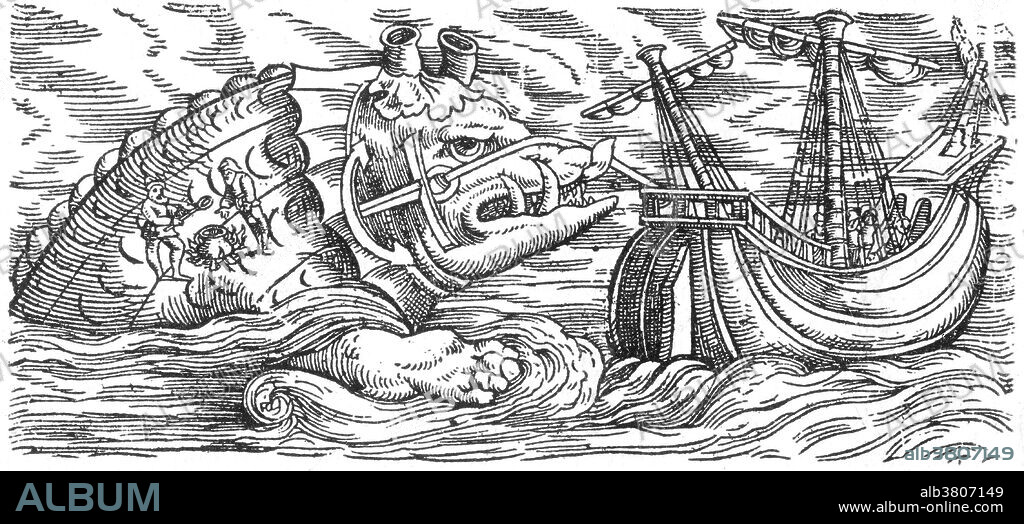alb3807149
Aspidochelone, Legendary Sea Monster

|
Añadir a otro lightbox |
|
Añadir a otro lightbox |



¿Ya tienes cuenta? Iniciar sesión
¿No tienes cuenta? Regístrate
Compra esta imagen.
Selecciona el uso:

Título:
Aspidochelone, Legendary Sea Monster
Descripción:
Ver traducción automática
According to the tradition of the Physiologus and medieval bestiaries, the aspidochelone is a fabled sea creature. "It is a great whale, that has what appear to be beaches on its hide, like those from the seashore. This creature raises its back above the waves of the sea, so that sailors believe that it is just an island, so that when they see it, it appears to them to be a sandy beach such as is common along the sea-shore. Believing it to be an island, they beach their ship alongside it, and disembarking, they plant stakes and tie up the ships. Then, in order to cook a meal after this work, they make fires on the sand as if on land. But when the monster feels the heat of these fires, it immediately submerges into the water, and pulls the ship into the depths of the sea." It has also been credited as a Trolual and appeared in Genser's great zoological work, Historiae animalium, 16th century, inspired by the Carta Marina of Olaus Magnus. A trolual was a sea monster found in ancient stories of sailors and fishermen in the Norwegian Sea (Iceland and the Faroe Islands .
Crédito:
Album / Science Source / New York Public Library
Autorizaciones:
Tamaño imagen:
4557 x 2097 px | 27.3 MB
Tamaño impresión:
38.6 x 17.8 cm | 15.2 x 7.0 in (300 dpi)
Palabras clave:
ANIMAL • ARTE • BLANCO Y NEGRO • CREATURE • CRIATURA • CUENTO POPULAR • DIBUJO • FAMOSA • FAMOSO • FAMOSOS • FOLKLORE • GRABADO EN MADERA • HISTORIA • HISTORICO • ILUSTRACION • ILUSTRACIONES • IMAGINARIO • IMPORTANTE • LEGENDARIO • MARINA • MÍTICO • MITO • MITOLOGICA • MITOLÓGICO • MITOLOGICOS • MONSTER • MONSTRUO MARINO • MONSTRUO • OBRA DE ARTE • PLANCHA DE MADERA • S. XVI • SIGLO XVI • XILOGRAFIA


 Pinterest
Pinterest Twitter
Twitter Facebook
Facebook Copiar enlace
Copiar enlace Email
Email
